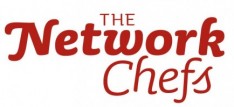Replacing bricks and mortar with virtual space is no longer a new concept. It’s a tactic born during the recent downturn because it simply made economic sense. But it’s a strategy today that is gaining favor for a variety of reasons – for instance, in the world of real estate; agents are at their desks less often as they conduct more business electronically.
“We’ll always need to have office space for agents,” said RE/MAX Gateway President Scott McDonald at RISMedia’s recent CEO Exchange at New York’s Yale Club. “But space planning has become a big part of our growth strategy. We are focused now on smaller spaces in better locations and on subleasing space we no longer need until contracts come up for renewal.”
It’s a question of maximizing your cost per square foot, noted Gloria Nilson REALTORS® Real Living chairman Dick Schlott. “Times are better and sales are up, but every inch of brick and mortar space has to be covered by sales production. These days, every one of our managers is talking to every agent. It’s time to get real or get out.”
But even downsizing needs to be strategic.
Connie Farmer Ray, president of Coldwell Banker Platinum Partners, has gone from 13 offices to seven over the past few years. “But we shifted our long-time and well-regarded magazine from hard copy to electronic, and put more emphasis on outstanding virtual tours, so we have actually added people to our marketing and IT departments. It’s a strategy that is paying off for us.”
What you do with your space is critical, agreed Bill Plattos, general manager and executive vice president of First Team Real Estate. “You need to reallocate space and re-educate people. When REO properties were on the rise, we increased the number of REO agents. Now that we’re seeing more equity sellers, we’re emphasizing more traditional farming. We know we have to re-evaluate our options and opportunities each time the market changes.”
Space aside, today’s “new normal” environment requires other new ways of doing business. For Helen Hanna Casey, president of Howard Hanna Real Estate, growth is tied to banking relationships that enable sound financials and cash reserves.
“You have to be focused on debt ratio to equity,” said Casey, who has steered the company’s profitability upward annually for most of the past 10 years. “We pay cash for our buildings, but we don’t overspend, and we can turn on a dime to close them if we need to – and we send our financials to 10 different banks on a regular basis. If you court the banks, they will soon be courting you, and that gives you the banking partnerships and the backing you need to make sound financial decisions.”
Additionally, said Casey, most brokers don’t talk to their people about money. “We do. We give every manager a salary increase if they meet our profit goals, and our chief financial officer gets a percent of the profit.”
For Coldwell Banker’s Farmer Ray, the new model includes anything they can do to make the consumer feel part of the company – from an interactive website that enables online chats with agents to finding innovative ways to use QR codes and facilitating social media communication.
“We post informative videos, we host ‘lunch and learn’ sessions via iPad … we are ready to do whatever it takes to bring consumers coming back to our site,” she said.
Sometimes, CEO Exchange panelists agreed, tweaking an old-model strategy is enough to take it to the next level – like slashing the number of office telephones and routing calls to agents’ cell phones or virtual extensions – or adding innovative new services and more people to pump up your relocation business – or restructuring your compensation plans to make them flexible enough to attract new agents and attractive enough to retain top producers.
But sometimes, it takes a less conventional vision.
“It’s a crazy industry – always has been,” observed First Team’s Platttos. “The more you think you know it, the more it changes. Whether it’s downsizing smartly, repurposing resources, or developing alternative income streams, the new model is keeping your finger on the pulse – and having enough flexibility to change right along with it – and fast.”
By Barbara Pronin
Contact Us for More Information – Like Us on Facebook – Follow Us on Twitter – Join our LinkedIn Group

